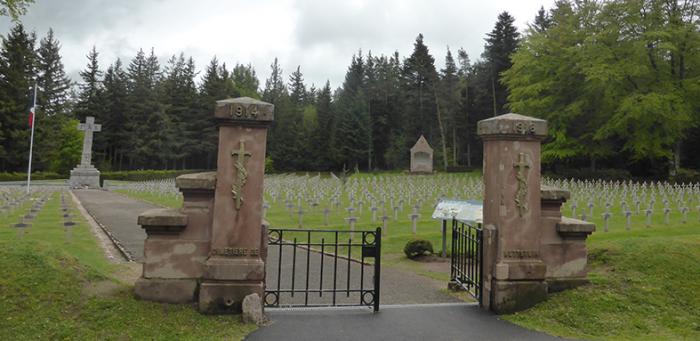
La nécropole nationale du Col de Wettstein. © Guillaume Pichard
Pour accéder au panneau d'information de la nécropole, cliquer ici 
Located next to the Col du Linge, the scene of violent fighting in 1915, the Col de Wettstein national cemetery holds the remains of soldiers who died for France in Haute-Alsace, in the sectors of Lingekopf, Barenkopf, Schartzmännele and the Fecht valley. There were heavy losses during the battles of Le Linge and La Tête des Faux between 1914 and 1915: 10,000 Frenchmen and 7,000 Germans were killed. Following these offensives, this sector no longer played a major role until the end of the war.
This cemetery brings together 3,535 Frenchmen, including 1,334 buried in two ossuaries. They are, for the most part, mountain infantrymen, however some soldiers from the 7th battalion of Indo-Chinese infantrymen also lie here. A testament to their sacrifice, this national cemetery bears the symbolic name of "cimetière des chasseurs", or cemetery of the mountain infantrymen. A monument by the sculptor Antoine de Colmar was inaugurated in August 1939 as a tribute to the dedication of these men. In the shadow of an enormous cross on which the word PAX (Peace) is inscribed, is the recumbent statue of a mountain infantryman, his rifle on the ground. In the absence of a grave around which they can gather their thoughts, bereaved families have affixed plaques to the walls of the two ossuaries in memory of soldiers whose bodies will never be found.
In 1921, after being taken over by the state, the battlefields of Hartmannswillerkopf, La Tête des Faux and Le Linge were classified, followed by the military cemeteries of Moosch and Carrefour Duchêne in 1923-1924. Little by little, they faded into obscurity, only to later receive renewed recognition due to their history and the suffering endured by the French and German soldiers.